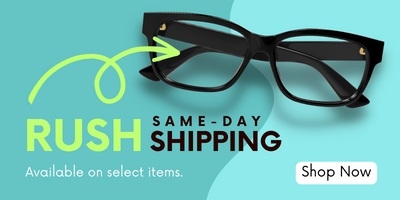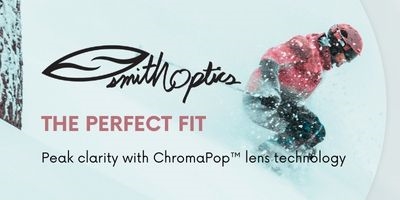In this Guide
Comparison Chart
The feature chart below illustrates some of the main comparison features and differences between the different lens materials and their primary features. Some materials are lighter, stronger, clearer, thicker/thinner, more scratch durable, as seen below. Click the names for more information.
Legend: Best Available Unavailable Worst
| Glass | Plastic | Hi-Index | Polycarbonate | Trivex | |
|---|---|---|---|---|---|

|
|||||

|
|||||

|
|||||

|
|
|
|||

|
|
|
|||

|
|
|
|
|
|

|
|
|
|
|
|

|
|
|
|
|
|

|
Pros & Cons
Ever wonder what each type of lens material has to offer? Sometimes choosing the right prescription lenses can seem like quite a challenge. Review the pro's and con's for each material below to get a better idea of each lens material.
Plastic
Pros:
- Low Distortion
- High Optical Clarity
- Affordable
- Great Tintability
Cons:
- Thick in strong prescriptions
- Poor strength & durability
- No special features
Standard CR-39 plastic lenses are your traditional, every-day, normal prescription lens. No fancy features, or special qualities really. They're pretty much at the bottom of the lens spectrum when it comes to pricing. It's usually the most affordable option which practically offers one of the clearest visions. This material is highly customizable, and can take all kinds of treatments without too many issues. Standard plastic is the only material that can be color tinted in the darker shades.
Glass
Pros:
- Scratch Durability
- High Optical Clarity
- Traditional
Cons:
- Thick
- Fragile (Chipping / Shattering)
- Heavy
Nothing like good ole' traditional, heavy glass. The real pioneer in prescription lenses. The only reason they're not quite obsolete yet, is well because, they can take quite a beating. Not to mention, glass material is the clearest material out there when it comes to prescription lenses. They're pretty much impossible to tint, so forget about adding any kind of tint to them. That and, you have to be sure to handle these with extreme care. If you drop them, you run the high risk of them breaking, or shattering. So if you're going to partake in any kind of physical sport or activity, I would definitely stay away from glass lenses.
Hi-Index
Pros:
- Thinnest Available
- Includes UV Protection
- Includes Anti-Scratch Coat
Cons:
- Hard to Tint
- Less Optical Clarity
Hi-Index plastic is made of plastic that has a higher index of refraction. This means it's like plastic, but just a little bit different in how it handles light. Hi-Index lenses are known as the Ultra-Thin lenses, based on the index of refraction. The index of refractions available in Hi-Index are usually 1.56, 1.60, 1.67, and 1.74. Generally, the higher the index number, the thinner the lens will be.
Polycarbonate
Pros:
- Lightweight
- Impact Resistent
- Drillable
- Includes UV Protection
- Includes Anti-Scratch Coat
Cons:
- Hard to Tint
- Less Optical Clarity
Polycarbonate is relatively a more modern approach to prescription lenses. Around 20% thinner than traditional plastic, lightweight, impact resistent. It's commonly used in sports, physical or hazard intensive activities, which means polycarb lenses are the common choice for children and minors. The introduction of this material really opens the doors to drill-mount rimless eyeglasses considering they hold up better being drilled through, as opposed to the common cracking and chipping which happens with ordinary plastic, due to the pressure applied by demanding rimless eyewear. This material does not do well with cleaner chemicals like acetone. It's known to crack or cloud when it comes into contact with it. If you're planning on going for sunglass lenses, ideally it's suggested to choose a polycarbonate polarized lens, as opposed to using traditional color tinting, since the polycarbonate material doesn't play to well with color tints. This may be due to the fact that it already is treated to help prevent scratches and uv rays.
Trivex
Pros:
- Lightest
- Impact Resistent
- Drillable
- Includes UV Protection
- Includes Anti-Scratch Coat
Cons:
- Thicker than Polycarbonate
- Hard to tint
- More Expensive

The Trivex lens material. You can look at Trivex as if it was pretty much polycarbonate's younger brother. Strong, light, thin, if you didn't know better, you would think they're the same. Although minimal, they have some differences. Trivex is generally around 10% thicker than Polycarbonate, it's also about 10% lighter as well.
Benefits & Qualities
The following sections of this guide will explain the different benefits and qualities of each lens material which are commonly used by wearers. It is important to understand these signifigances when attempting to choose a lens. How they will function with the frames you are intending to buy, what will be required based on the frames you buy, what will not be available for the frames you choose.

Anti-Scratch
Glass is generally the most durable against scratching by it's nature. Standard CR-39 plastic is generally the least durable against scratching. Certain treatments are available to improve the resistence of scratches, including standard plastic lens. All remaining materials include a standard hard coat, but can be customized with premium anti-glare coatings, which provide additional scratch resistance.

Thin
Hi-Index would be considered the thinnest, since it comes in a variety of thicknesses, with some being nearly 50% thinner than standard plastic. Polycarbonate or Trivex would be next up with being about 20% thinner than standard plastic. However, Trivex is about 10% thicker than polycarbonate. Plastic or glass are both around a 1.50 index or less, which makes them the thicker options, with glass being the thickest.

Clarity
The design of the lenses may allow more or less light to passthrough. The more light the lens allows to pass through, the clearer the vision. This is where glass and plastic lead the race, with glass being the clearest. Although the other materials aren't as notably clear, they are still clear enough to be worn for lenses.



Safety
As traditional glass material tends to shatter or break easier than the other materials, they aren't usually recommended for safety or sports. Trivex and polycarbonate are commonly the safer materials, which offer impact and shatter resistence. Bullet-proof glass is a type of polycarbonate, and although thicker than traditional lenses, should give you an idea about how strong this material is. This makes them great for kids, sports, or activies which involve flying objects and puts the eyes less at risk against injury.

Kids
As traditional glass material tends to shatter or break easier than the other materials, they aren't usually recommended for safety or sports. Trivex and polycarbonate are commonly the safer materials, which offer impact and shatter resistence. Bullet-proof glass is a type of polycarbonate, and although thicker than traditional lenses, should give you an idea about how strong this material is. This makes them great for kids, sports, or activies which involve flying objects and puts the eyes less at risk against injury.

Sports
As traditional glass material tends to shatter or break easier than the other materials, they aren't usually recommended for safety or sports. Trivex and polycarbonate are commonly the safer materials, which offer impact and shatter resistence. Bullet-proof glass is a type of polycarbonate, and although thicker than traditional lenses, should give you an idea about how strong this material is. This makes them great for kids, sports, or activies which involve flying objects and puts the eyes less at risk against injury.

Rimless
By design, rimless glasses don't really offer any kind of surrounding protection for the lenses. Drill-mount frames require lenses to be drilled and mounted on, and that opens a new door with its own challenges. Certain materials tend or crack due to the pressure of the mounting, and although appear agile, they are also fragile, and can easily break or fall apart when dropped. This makes certain lens materials like poly or trivex more appropriate for drilling and mounting. In many cases polycarbonate and trivex materials are required not only for it's safety properties, but they can hold up better in a pair of rimless glasses than others.
In conclusion, each lens material has its pluses and trade-offs. As you can see there are many things to consider when choosing a material. For this reason, it is always recommended to consult with an eye care professional for any assistance with the "best" material for you. This information is general information for the different lens types and their qualities.

























